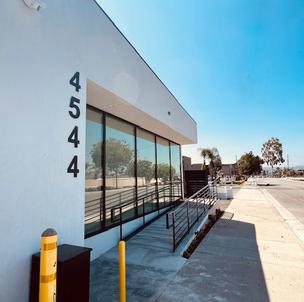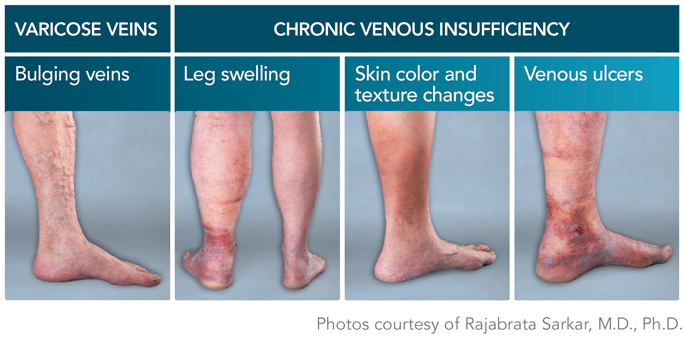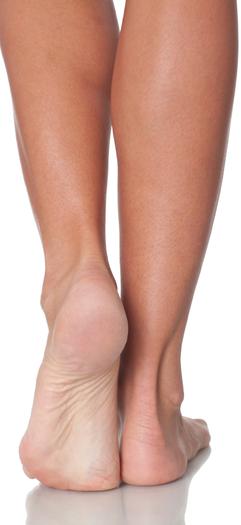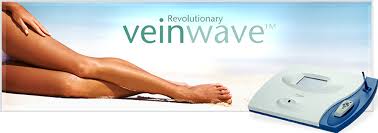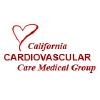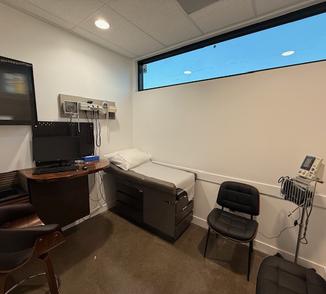APPOINTMENTS CALL 626-577-7050
California Cardiovascular Care Medical Group Inc.
Our new vein center features the state of the art non- invasive VNUS RF ablation technology for the most effective treatment of venous reflux disease for quick and effective relief from the symptoms of this very common and unsightly disease.
Our physicians carry out the largest number of VNUS procedures in the San Gabriel Valley , making us one of the most experienced vein centers in Los Angeles area.Our physicians use non - invasive ultrasound doppler and vein light technology to identify and treat the root cause of superficial venous reflux and varicose veins of all size , shape and complexity.
Treatments and Testing Offered Include:
- Diagnostic vascular venous Doppler
- Veinwave for spider veins
- Vein light
- RF VNUS closefast technology using painless local anesthetic techniques
- VenaSeal vein closure using intravenous adhesive agent
- Sclerotherapy for residual spider veins
- Stab Phlebectomy for residual large and unsightly veins still present after successful treatment of venous reflux
- Sterile techniques featuring single use sterile disposable instruments
OUR PROCEDURES AND TESTING ARE COVERED BY MOST PPO INSURANCES AND MEDICARE
What are Varicose Veins?
Varicose veins are most often swollen, gnarled veins that most frequently occur in the legs, ankles and feet. They are produced by a condition known as venous insufficiency or venous reflux, in which blood circulating through the lower limbs does not properly return to the heart but instead pools up in the distended veins.
More than 25 million Americans suffer from venous reflux disease. The symptoms can include pain and fatigue in the legs, swollen ankles and calves, burning or itching skin, skin discoloration and leg ulcers. In less severe cases, thin, discolored vessels – “spider veins” – may be the only symptom.
Gender and age are two primary risk factors in the development of venous reflux. An estimated 72% of American women and 42% of men will experience varicose veins symptoms by the time they reach their sixties. Women who have been pregnant more than once and people who are obese, have a family history of varicose veins or spend a great deal of time standing have an elevated risk for the condition, but it can occur in almost anyone at almost any age. Varicose veins never go away without treatment and frequently progress and worsen over time.
Severe varicose veins can have a significant impact on the lives of people who work on their feet – nurses, teachers, flight attendants et al. Research has shown that more than two million workdays are lost each year in the US, and annual expenditures for treatment total $1.4 billion.
Causes & Risk Factors
If you have never suffered from varicose veins, you are quite fortunate or you are in the minority as– nearly three-quarters of American women and more than 40% of men will encounter the condition by the time they reach retirement age, and venous reflux disease occurs even in teenagers.
By an almost 2-1 margin, women are more likely to develop varicose veins than men. pregnancy and childbirth are major contributing factors – women who have been pregnant more than once are highly susceptible – partly because the hormonal changes that occur during pre-menstruation and menopause are known to relax vein walls and increase the chances of venous reflux. Hormone replacement therapy and birth control pills can increase the risk as well.
Other significant contributing factors for varicose veins include obesity, a family history of varicose veins, and extended periods of standing – nurses, teachers, postal workers, flight attendants and other people with “vertical” careers or activities are vulnerable to developing varicose veins, as is anyone who does a lot of heavy lifting.
Finally, the longer you live, the more likely you are to develop varicose veins. Half of all Americans over 50 have them, as do two-thirds of women over 60.
Symptoms
Varicose veins are swollen vessels, blue or purple in color and generally bulging above the surface of the skin. They may appear twisted or "ropey" and can be accompanied by swelling in adjacent tissue. They can be found anywhere on the leg, from the ankle up to the groin, but most commonly appear on the inside of the thigh or on the back of the calf or knee.
Varicose veins are not always a serious or uncomfortable condition – for some people, small discolored vessels or minor swelling may be the only signs – but for millions of sufferers they can cause symptoms severe enough to significantly impact the quality of life. Throbbing pain, a deep ache or heavy feeling in the legs, muscle cramps, fatigue, “restless” legs, burning or itching skin, and severe swelling of the ankles can all be symptoms of venous reflux disease, the major underlying cause of varicose veins.
When symptoms like these are present, they frequently curtail the patient’s activities and can even force them to miss work. Sufferers complain of being unable to walk, stand or sit for very long without feeling pain or exhaustion.
In severe cases, varicose veins can be indicators of serious circulatory problems, producing blood clots or skin ulcers that require immediate medical attention.
Test & Diagnosis
To determine whether venous reflux disease is causing your varicose vein symptoms, your primary care physician may conduct an examination and some tests. In some cases, you may be referred to a vein specialist at this time. After you describe your symptoms, the doctor will examine your legs in a standing position, looking for swelling, visible veins and signs of skin changes, like discoloration, irritation or early signs of ulcers.
The next step is a “hands-on” examination – the doctor will feel your leg with his fingertips to detect swollen veins that are too deep under the skin to be visible. The groin area and the back of the calf are particular targets for inspection, and the doctor will also pay special attention to any areas of significant pain or tenderness, because that can indicate a possible blood clot or deep vein thrombosis (DVT).
If the exam produces sufficient signs of venous reflux, your doctor will probably order an ultrasound examination, a non-invasive test that provides a clear and detailed image of the circulatory system in your leg. The most sophisticated ultrasound tests use Doppler technology – the same technology used for weather radar – that illustrate the blood flow in various shades of red and blue to show the doctor the speed and direction of the blood flow through the vein.
If the ultrasound confirms the diagnosis of venous reflux, your physician will commonly prescribe conservative measures like compression stockings as a first step in your treatment. (If the ultrasound does not indicate venous reflux, a Magnetic Resonance Imaging test may be ordered to pinpoint the source of the symptoms.) Patients exhibiting the signs or symptoms of varicose veins may request a referral to a specialist performing the VNUS Closure procedure like Dr. Christodoulou.
Treatments
For milder cases of varicose veins and spider veins, physicians generally recommend a variety of self-help, non-surgical measures to ease discomfort and prevent the condition from worsening. These measures include exercise, losing weight, wearing compression stockings, elevating the legs and avoiding long periods of standing or sitting.
Direct medical treatments for spider veins include sclerotherapy, in which the veins are sealed with injections of a chemical solution that closes the vein walls. Spider veins can also be treated with non-invasive lasers, which cause the veins to fade and disappear.
For more severe cases of varicose veins, in which the veins bulge beyond the skin or cause significant pain and swelling, relief usually requires a medical intervention. The traditional surgical approach has been vein stripping, a procedure commonly requiring general anesthesia in which incisions are made near the knee and groin and the diseased primary vein is literally pulled from the body using a device. While reasonably effective, vein stripping generally produces significant post-operative pain and bruising, and usually requires a lengthy and uncomfortable recovery period.
In the United States, however, vein stripping has been rendered virtually obsolete by new, minimally invasive catheter technology that enables even severe varicose veins to be successfully treated in a doctor’s office under a local anesthetic in just a few minutes. A device is inserted into the diseased vein, where a catheter ---- delivers radiofrequency (RF) -----to heat and seal the vessel. The technique is extremely successful and far less painful and traumatic to the patient than vein stripping.
Radio frequency devices operate at far lower temperatures to heat and shrink the vein walls, limiting the impact on surrounding tissues and, according to a clinical study, causing significantly less pain and bruising than laser.
Physicians using the VNUS ClosureFAST™ catheter, the only radiofrequency device on the market today for the treatment of venous reflux, report that most patients return to normal activity almost immediately following the procedure, with little or no post operative pain.
Treatment Options
VNUS Closure™
VenaSeal
Aclerotherapy
Vein Stripping
Phlebectomy
Introducing to the Los Angeles Area
Veinwave - A Revolutionary New Treatment for Spider Veins
The recent FDA approval of Veinwave means that patients with unsightly spider veins and telangiectasia (small thread veins) are able to experience the wonderful results that people in the UK have been enjoying for years. This revolutionary technique has been perfected by vascular surgeons for the treatment of these troublesome veins and is a great improvement from traditional treatments like sclerotherapy and laser treatment.
Veinwave uses a thermocoagulation, or a high frequency energy to heat the veins, causing them to disappear instantly. A one-time use, thin, insulated needle is used to deliver these waves. The ultra-fine needle allows for the extremely accurate application of the treatment, protecting the skin and tissue, for help in preventing ugly scarring. Veinwave is effective in treating areas such as the ankle or knees, that cannot be treated through alternative methods. Patients are able to see results immediately. While Veinwave does not cause bruising, patients may experience some redness or small marks that look like scratches that will disappear within a few days.
Veinwave is an excellent alternative to sclerotherapy or laser treatments that may cause permanent scarring through skin pigmentation. There are no risks of allergic reactions like those associated with the injected solution in sclerotherapy and there is no recovery period. Unlike with other treatments, the patient experiences minimal pain and does not require bandages, so they are able to resume normal activity immediately following treatment.
Dedicated State-of-the-Art Varicose Vein and Vascular Center

